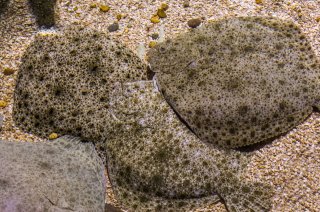
Project
Stunning captured wild sea fish for better animal welfare
Due to societal developments, it is important that the fishing industry focuses on sustainable, socially acceptable and valued products and production methods. Attention to animal welfare also fits in with these developments. Injuries caused by killing and processing captured fish on board commercial fishing vessels can be minimised by stunning the animals, rendering them unconscious, prior to killing and processing.
In this project Wageningen Research and its partners are investigating whether and how stunning is possible on board commercial fishing vessels. The researchers are studying whether stunning actually makes a positive contribution to animal welfare, and whether it can also contribute to a healthy, future-proof business plan for fisheries.
For the study, a stunning machine will be developed that will be initially tested under laboratory conditions and subsequently on board a commercial fishing vessel at sea. The method will be tested in practice for its effectiveness and also for its suitability with regard to the vessel’s fish handling procedures and, of course, the wellbeing of the crew. Within this project, it was decided to start with two species of commercial importance to the Dutch cutter fleet: plaice (Pleuronectes platessa) and turbot (Scophthalmus maximus).
A 2018 survey showed that 72% of Dutch consumers believe that the welfare of fish should have the same importance as the welfare of other animals consumed by humans. This consumer group also indicates that they are willing to pay extra for this. Consumers also indicate that fish welfare is one of the most important factors they consider when making a choice for fish, more important than overfishing and bycatch. Despite the importance which consumers attach to this, there is rarely any information about it provided to consumers on packaging / supermarket shelves etc. Therefore, this project will also investigate how best to communicate improved fish welfare to consumers.
Our goals are therefore:
- To operationalise the stunning of captured wild plaice and turbot on board commercial fishing vessels before slaughter
- To secure the supply chain so that consumers can be sure that the fish bought has actually been stunned on board, including good working conditions for the crew on board
- To make stunned fish visible on sales outlet shelves for consumers, for example by using the Dutch seafood guide (VISwijzer) app or otherwise
- To explore possibilities to add value to the selected fish species
- To contribute to and support the dissemination of captured fish welfare knowledge and enable its application by various stakeholders and by educational institutes
To achieve these ambitious goals, we have put together a multidisciplinary team consisting of the following partners, MDV Beheer B.V., Fish Management Systems Ltd, Wageningen Livestock Research, Wageningen Marine Research, Wageningen Economic Research, Good Fish Foundation and the Prosea Marine Education Foundation. The partners MDV-2, Wageningen Livestock Research and Wageningen Marine Research form the management team of the project.
With this project, we want to contribute to knowledge on stunning of captured wild fish and fish welfare, and work on knowledge dissemination and its application. In addition, we hope that the findings of this project will be a blueprint for innovation in the demersal fleet. The innovative character of this project is ambitious and therefore a number of Go / No Go moments have been established in the project, during which the feasibility of the project will always be critically evaluated.